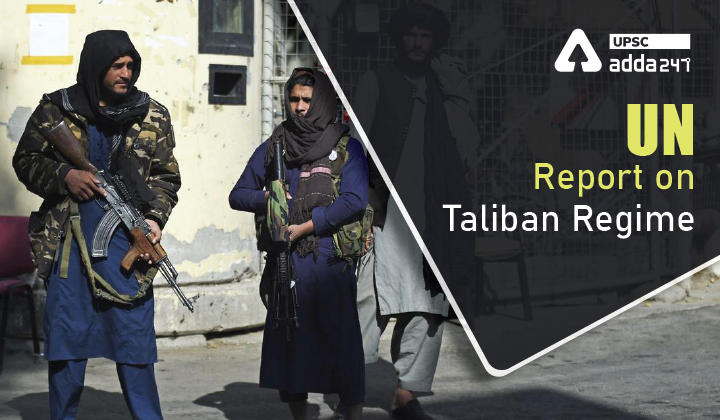Table of Contents
UN Report on Taliban UPSC: Relevance
- GS 2: Effect of policies and politics of developed and developing countries on India’s interests, Indian diaspora.
Taliban rule in Afghanistan: Context
- Recently, United Nations Security Council (UNSC) has released a new report, which says that foreign terrorist organisations continue to enjoy safe haven under the new Taliban regime.
UN Report on Taliban Afghanistan: Key findings
- Terrorist attacks: The report finds that due to financial constraints, and under political pressure not to embarrass the Taliban internationally, the terrorist groups are not likely to launch major attacks outside Afghanistan before 2023.
- Three division in Taliban: There are three division in Taliban—Moderate, hardline, and Haqqani network.
- Moderates want working relationships with foreign partners and integration with the international system.
- Hardline want a more ideological stance, with little interest in international relations.
- Haqqani while being more aligned with the hardliners, is inclined towards a pragmatic rather than ideological approach to securing Taliban interests. According to the report, Haqqani Network are cornering most of the influential posts in the administration.
- Ethnic dynamics: The report believes the Kandahari (Durrani) Taliban to be in the ascendancy among the Taliban leadership, with Pashtuns getting precedence over non-Pashtuns.
- Issue in common goal: Internal cohesion within the Taliban was easier to maintain during the insurgency period, when there was a compelling common cause to expel foreign forces from Afghanistan.
Terrorist threat to India
- The report has said that two India-focussed terrorist groups, Jaish-i-Mohammed (JiM) and Lashkar-e-Taiba (LeT), are reported to have training camps in Afghanistan.
- Both the groups enjoy close links with the Taliban leadership, with the LeT having a history of providing finance and training expertise to Taliban operations.
- The report also says that the al-Qaeda in Indian Sub-continent (AQIS) has 180-400 fighters in Afghanistan from Bangladesh, India, Myanmar and Pakistan.
- At present, the terrorist outfit has been forced to adopt a “less aggressive posture” due to financial constraints.
- The report also notes that the name change of the AQIS magazine from ‘Nawa-i-Afghan Jihad’ to ‘Nawa-e-Gazwah-e-Hind’ suggests a “refocussing of AQIS from Afghanistan to Kashmir”.
Terrorist groups in Afghanistan
- Tehreek-e-Taliban Pakistan (TTP) constitutes the largest component of foreign terrorist fighters in Afghanistan. They are mostly located along the east and south-east Afghanistan-Pakistan border areas.
- Among all the foreign extremist groups in Afghanistan, it is the TTP that has benefited the most from the Taliban takeover.
- The report also finds that the Kabul airport attack of August 26 has elevated the Islamic State in Iraq and the Levant-Khorasan (ISIL-K) to be the most prominent Da-esh affiliate in the region.
- While the activity of TTP declined towards the end of 2021, the group has grown in strength through prison releases and new recruitments.
- Meanwhile, al-Qaeda continues to enjoy a close relationship with the Taliban.
- The report noted that neither ISIL-K nor the al-Qaeda were believed to be capable of mounting international attacks before 2023 at the earliest.
- The report concludes that their presence, along with the presence of other terrorist groups on Afghan soil, remain a matter of grave concern for neighbouring countries and the wider international community.
तालिबान शासन पर संयुक्त राष्ट्र की रिपोर्ट: अल-कायदा का फोकस अब भारत पर
Read current affairs for UPSC





 TSPSC Group 1 Question Paper 2024, Downl...
TSPSC Group 1 Question Paper 2024, Downl...
 TSPSC Group 1 Answer key 2024 Out, Downl...
TSPSC Group 1 Answer key 2024 Out, Downl...
 UPSC Prelims 2024 Question Paper, Downlo...
UPSC Prelims 2024 Question Paper, Downlo...




